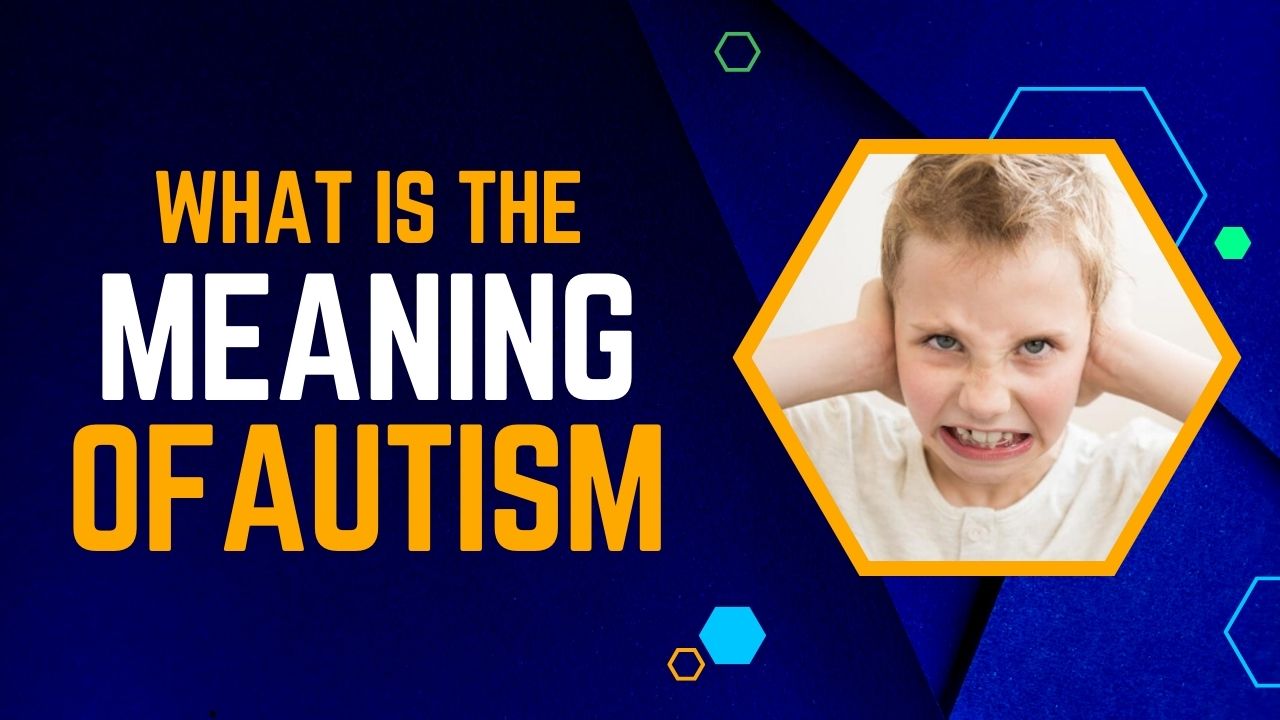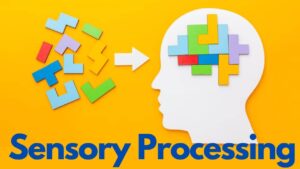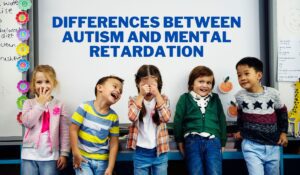I assume you’re asking for more detailed information about autism. Autism is a neurodevelopmental disorder characterized by challenges in social interaction, communication, and restricted or repetitive behaviors. These challenges can manifest in various ways, leading to a spectrum of symptoms and abilities among individuals with autism. Here are some key points that delve deeper into the meaning of autism:
- Social Interaction Challenges: People with autism may struggle with understanding social cues, facial expressions, body language, and the nuances of social interactions. They may find it challenging to initiate or maintain conversations, make eye contact, or engage in reciprocal social interactions.
- Communication Difficulties: Language and communication skills can be affected in autism. Some individuals may have delayed speech development, while others may have advanced vocabularies but struggle with pragmatic language (using language appropriately in social contexts). Nonverbal communication, such as gestures and facial expressions, can also be challenging.
- Repetitive Behaviors: Many individuals with autism engage in repetitive behaviors or rituals. These can include repetitive movements (e.g., hand-flapping, rocking), insistence on sameness or routines, and intense interests in specific topics. These behaviors can provide comfort or serve as a way to regulate sensory input.
- Sensory Sensitivities: Sensory sensitivities are common in autism. Individuals may be hypersensitive (overly responsive) or hyposensitive (under-responsive) to sensory stimuli like lights, sounds, textures, tastes, or smells. These sensitivities can impact daily functioning and contribute to behavioral responses.
- Strengths and Challenges: Autism is often described as a spectrum because individuals with autism have diverse strengths and challenges. Some may excel in areas like mathematics, music, art, or computer programming, showcasing exceptional abilities (often referred to as savant skills), while facing difficulties in social situations.
- Early Diagnosis and Intervention: Early diagnosis and intervention are crucial for individuals with autism. Early intervention programs can include therapies such as Applied Behavior Analysis (ABA), speech therapy, occupational therapy, and social skills training. These interventions aim to improve communication, social skills, behavior management, and daily living skills.
- Neurodiversity Perspective: Many advocates and researchers promote a neurodiversity perspective regarding autism. This perspective recognizes the natural variations in human neurology and emphasizes the value of diverse ways of thinking, learning, and experiencing the world. It promotes acceptance, support, and inclusion for individuals with autism.
Understanding autism involves recognizing the complexity of the condition, acknowledging individual differences, and fostering environments that support the diverse needs and strengths of people on the autism spectrum.
Social Interaction Challenges
Social interaction challenges are a hallmark feature of autism spectrum disorder (ASD). Individuals with autism often struggle with understanding and navigating social situations in various ways:

- Difficulty with Social Cues: They may have trouble interpreting subtle social cues such as facial expressions, tone of voice, and body language. This can lead to misunderstandings or misinterpretations in social interactions.
- Limited Eye Contact: Many individuals with autism find it challenging to make and maintain eye contact during conversations, which is a common social norm in many cultures.
- Social Reciprocity Issues: They may have difficulty engaging in back-and-forth conversations or understanding the give-and-take nature of social interactions. This can manifest as one-sided conversations or a tendency to talk excessively about their interests without considering the listener’s responses.
- Difficulty with Social Initiation: Initiating social interactions, making friends, or joining group activities can be challenging for individuals with autism. They may feel anxious or unsure about how to start or sustain social connections.
- Understanding Social Norms: People with autism may have trouble understanding and adhering to social norms, rules, and expectations in different social contexts. This can lead to behaviors that others may perceive as unusual or inappropriate.
- Theory of Mind Challenges: Theory of mind refers to the ability to understand that others have beliefs, thoughts, and perspectives different from one’s own. Individuals with autism may struggle with theory of mind, which can impact their ability to predict and understand others’ behaviors and intentions.
- Social Anxiety: Social interactions can be anxiety-provoking for individuals with autism, especially in unfamiliar or unpredictable situations. This anxiety may further hinder their social engagement and communication.
Addressing social interaction challenges in autism often involves targeted interventions and supports, such as social skills training, cognitive-behavioral therapy, peer-mediated interventions, and creating structured social environments that accommodate individual needs. It’s essential to approach these challenges with understanding, patience, and a focus on building strengths and confidence in social situations.
Communication Difficulties
Communication difficulties are a significant aspect of autism spectrum disorder (ASD) and can manifest in various ways:

- Delayed Speech Development: Some individuals with autism may have delayed speech and language development, meaning they start speaking later than typically developing children. This delay can range from mild to severe.
- Echolalia: Echolalia is a common communication pattern in autism where individuals repeat words or phrases they hear, often without understanding their meaning. It can be immediate (immediate echolalia) or delayed (delayed echolalia).
- Difficulty with Pragmatic Language: Pragmatic language refers to the social use of language, including understanding and using language appropriately in social contexts (e.g., taking turns in conversation, using polite language). Many individuals with autism struggle with pragmatic language skills.
- Literal Understanding: Some individuals with autism have a literal understanding of language, which means they may have difficulty understanding figurative language, sarcasm, idioms, or jokes.
- Nonverbal Communication Challenges: Nonverbal communication, such as gestures, facial expressions, and body language, can be challenging for individuals with autism to interpret and use effectively. This can lead to misunderstandings in social interactions.
- Difficulty with Abstract Language: Abstract language concepts, such as metaphors, analogies, and hypothetical scenarios, may be challenging for individuals with autism to grasp.
- Augmentative and Alternative Communication (AAC): For those with more significant communication challenges, AAC systems such as picture boards, communication devices, or sign language may be used to support communication.
- Selective Autism: Some individuals with autism may experience selective mutism, where they do not speak in certain situations or with certain people, often due to anxiety or discomfort.
Addressing communication difficulties in autism often involves a multidisciplinary approach that may include speech therapy, augmentative and alternative communication strategies, social skills training, and creating supportive communication environments. It’s important to recognize and respect diverse communication styles and provide individuals with autism with the tools and support they need to express themselves effectively.
Repetitive Behaviors
Repetitive behaviors are a common characteristic of autism spectrum disorder (ASD). These behaviors can manifest in various forms and serve different purposes for individuals with autism:

- Stereotyped or Repetitive Movements: This includes repetitive movements such as hand-flapping, finger flicking, rocking back and forth, spinning objects, or pacing. These movements may provide sensory stimulation or a way to self-regulate.
- Insistence on Sameness or Routines: Many individuals with autism prefer predictable routines and may become distressed or anxious when routines are disrupted. They may insist on following specific rituals or maintaining sameness in their environment.
- Special Interests or Fixations: Individuals with autism often develop intense interests in specific topics, objects, or activities. These interests can be highly focused and consuming, leading to extensive knowledge or skill development in those areas.
- Repetitive Speech or Echolalia: Some individuals with autism engage in repetitive speech patterns, such as repeating phrases, scripts from movies or books, or specific words. This echolalic speech may serve different functions, including communication, self-soothing, or expression of interests.
- Visual or Auditory Stimming: Stimming (self-stimulatory behavior) can involve repetitive visual or auditory behaviors, such as staring at lights or spinning objects, making repetitive sounds or vocalizations, or listening to specific sounds repeatedly.
- Seeking Sensory Input: Repetitive behaviors in autism may also involve seeking or avoiding certain sensory inputs. For example, individuals may seek out specific textures to touch, sounds to listen to, or movements to experience, while avoiding sensory stimuli that are overwhelming or aversive.
- Ritualized Behaviors: Some individuals with autism engage in ritualized behaviors, such as arranging objects in a specific order, following a precise sequence of actions, or adhering strictly to certain rules or patterns.
It’s important to note that while repetitive behaviors are common in autism, not all individuals with autism exhibit the same behaviors or to the same degree. These behaviors can serve different purposes, including sensory regulation, self-expression, coping with anxiety, or maintaining predictability in a complex world.
Understanding and supporting individuals with autism involves recognizing the function and meaning behind their repetitive behaviors, providing sensory accommodations when needed, teaching alternative coping strategies, and respecting the individual’s preferences and strengths. Applied Behavior Analysis (ABA) techniques and sensory integration therapy are among the approaches used to address repetitive behaviors in autism.
Sensory Sensitivities
Sensory sensitivities refer to heightened or altered responses to sensory stimuli, such as sights, sounds, smells, tastes, textures, and movements. Sensory sensitivities are common in autism spectrum disorder (ASD) and can significantly impact an individual’s daily life. Here are some key points about sensory sensitivities in autism:

- Hypersensitivity (Over-Responsiveness): Many individuals with autism experience hypersensitivity, where sensory stimuli are perceived as intense, overwhelming, or aversive. For example, they may be highly sensitive to loud noises, bright lights, strong smells, or certain textures.
- Hyposensitivity (Under-Responsiveness): On the other hand, some individuals with autism may exhibit hyposensitivity, meaning they have reduced sensitivity to sensory stimuli. They may seek out intense sensory experiences or engage in repetitive behaviors to increase sensory input.
- Sensory Overload: Sensory overload occurs when an individual is exposed to multiple or intense sensory stimuli, leading to feelings of overwhelm, anxiety, or distress. This can result in meltdowns or shutdowns, where the person becomes overwhelmed and may exhibit behavioral reactions.
- Sensory-Seeking Behaviors: Some individuals with autism engage in sensory-seeking behaviors to fulfill their sensory needs. This can include seeking out certain textures to touch, rocking or spinning for vestibular input, or listening to music at high volumes.
- Difficulty Modulating Sensory Input: Individuals with autism may have difficulty modulating or filtering sensory information, leading to challenges in focusing attention, regulating emotions, and maintaining appropriate behavior in sensory-rich environments.
- Impact on Daily Functioning: Sensory sensitivities can impact various aspects of daily functioning, including self-care activities (e.g., bathing, brushing teeth), social interactions (e.g., discomfort in crowded or noisy settings), academic performance (e.g., difficulty concentrating in sensory-rich classrooms), and participation in recreational activities.
- Sensory-Based Interventions: Addressing sensory sensitivities often involves sensory-based interventions tailored to individual needs. These interventions may include sensory diets (structured activities to regulate sensory input), environmental modifications (creating sensory-friendly spaces), use of sensory tools (weighted blankets, fidget toys), and sensory integration therapy.
Understanding and accommodating sensory sensitivities are crucial in supporting individuals with autism. Creating sensory-friendly environments, providing sensory breaks, using visual supports, and incorporating sensory-friendly activities can help individuals regulate their sensory experiences and participate more fully in daily life.
Strengths and Challenges
Here are some common strengths and challenges often associated with autism spectrum disorder (ASD):

Strengths:
- Attention to Detail: Many individuals with autism have a keen eye for detail and a strong ability to focus on specific tasks or interests for extended periods.
- Exceptional Memory: Some individuals with autism demonstrate exceptional memory skills, especially in areas of their special interests or specific factual knowledge.
- Analytical Thinking: Many individuals with autism exhibit strong analytical thinking skills, allowing them to excel in areas such as mathematics, logic, problem-solving, and pattern recognition.
- Creativity: Some individuals with autism have a heightened sense of creativity, often expressed through art, music, writing, or innovative ideas and solutions.
- Technical Abilities: Individuals with autism may excel in technical fields such as computer programming, engineering, science, and technology, leveraging their attention to detail and analytical skills.
- Honesty and Integrity: Many individuals with autism value honesty, integrity, and adherence to rules and principles, which can be strengths in various contexts.
- Dedication and Perseverance: Individuals with autism often demonstrate dedication and perseverance, especially when pursuing their interests or goals.
Challenges:
- Social Interaction Difficulties: Challenges in understanding social cues, making friends, interpreting nonverbal communication, and engaging in reciprocal conversations can be significant challenges for individuals with autism.
- Communication Barriers: Difficulties with verbal and nonverbal communication, pragmatic language skills, understanding metaphors, sarcasm, and abstract language concepts can hinder effective communication.
- Sensory Sensitivities: Many individuals with autism experience sensory sensitivities, including hypersensitivity or hyposensitivity to sensory stimuli, which can lead to discomfort, overwhelm, or avoidance in certain environments.
- Repetitive Behaviors: Repetitive behaviors, rituals, and routines can be a challenge, especially when they interfere with daily functioning, flexibility, and adapting to change.
- Executive Functioning Challenges: Difficulties in organization, planning, time management, prioritizing tasks, and transitioning between activities can pose challenges for individuals with autism.
- Emotional Regulation: Some individuals with autism may struggle with regulating emotions, understanding others’ perspectives, coping with stress, and expressing their feelings appropriately.
- Sensory-Seeking Behaviors: While sensory-seeking behaviors can fulfill sensory needs, they may also lead to challenges in certain settings or social contexts.
Understanding these strengths and challenges can guide support strategies and interventions to help individuals with autism thrive and reach their full potential. Approaches that build on strengths, accommodate challenges, promote independence, and foster a supportive environment are essential in supporting individuals with autism across various life domains.
Early Diagnosis and Intervention
Early diagnosis and intervention play crucial roles in supporting individuals with autism spectrum disorder (ASD) and improving their long-term outcomes. Here’s a breakdown of why early diagnosis and intervention are essential:

Early Diagnosis:
- Timely Access to Services: Early diagnosis allows children and their families to access specialized services and interventions at a younger age, maximizing the benefits of early intervention programs.
- Understanding Individual Needs: A diagnosis of autism provides clarity regarding an individual’s strengths, challenges, and specific needs, guiding personalized support and intervention planning.
- Family Support: Early diagnosis enables families to access information, resources, and support networks tailored to autism, empowering them to navigate challenges, make informed decisions, and advocate for their child’s needs.
- Preparation and Planning: Knowing about autism early allows families, educators, and healthcare professionals to plan and implement appropriate strategies, accommodations, and interventions to support the child’s development and well-being.
Early Intervention:
- Optimizing Developmental Outcomes: Research indicates that early intervention can lead to significant improvements in developmental outcomes, communication skills, social interaction, adaptive behavior, and academic achievement for children with autism.
- Targeted Therapies: Early intervention programs typically involve a range of evidence-based therapies and interventions tailored to the child’s individual needs, such as Applied Behavior Analysis (ABA), speech therapy, occupational therapy, social skills training, and sensory integration therapy.
- Enhancing Social Skills: Early intervention focuses on developing social skills, communication abilities, play skills, and self-regulation strategies, promoting positive social interactions and relationships.
- Addressing Behavioral Challenges: Early intervention addresses challenging behaviors common in autism, such as repetitive behaviors, sensory sensitivities, difficulties with transitions, and emotional regulation issues, through behavioral strategies and supports.
- Family Involvement: Early intervention programs often involve family participation, education, and training, equipping parents and caregivers with strategies, tools, and resources to support their child’s development and well-being at home and in community settings.
- Promoting Inclusion: Early intervention promotes inclusion and participation in various settings, such as early childhood education settings, community activities, and social environments, fostering a supportive and inclusive environment for children with autism.
- Long-Term Benefits: Studies suggest that children who receive early intervention show greater progress and independence over time, leading to improved outcomes in school, employment, relationships, and overall quality of life in adulthood.
Overall, early diagnosis and intervention are critical in laying the foundation for positive outcomes, enhancing developmental trajectories, supporting families, and promoting inclusion for individuals with autism. Early identification, access to services, individualized support, and ongoing monitoring and adjustments contribute to the success of early intervention efforts.Top of Form
Neurodiversity Perspective
The neurodiversity perspective is a paradigm that views neurological differences, including conditions such as autism spectrum disorder (ASD), as natural variations in the human population rather than strictly as disorders or deficits. Here’s an overview of the key principles and concepts associated with the neurodiversity perspective:

- Diversity in Neurology: The neurodiversity perspective acknowledges that the human brain is diverse, with variations in cognitive functioning, sensory processing, communication styles, and social interactions. It recognizes that different neurological profiles contribute to a spectrum of strengths, challenges, and ways of experiencing the world.
- Autism as a Natural Variation: Within the neurodiversity framework, autism is viewed as a natural variation in neurodevelopment rather than a strictly pathological condition. Individuals with autism have unique strengths, abilities, interests, and perspectives that contribute to the richness of human diversity.
- Shift from Pathology to Difference: The neurodiversity perspective challenges the medical model’s focus on pathology and deficits. Instead, it emphasizes acceptance, celebration, and accommodation of neurodivergent individuals’ differences and contributions to society.
- Respect for Autonomy and Self-Advocacy: Neurodiversity promotes the autonomy, agency, and self-advocacy of neurodivergent individuals. It encourages listening to their voices, preferences, needs, and perspectives, empowering them to participate fully in decisions that affect their lives.
- Strengths-Based Approach: Rather than solely focusing on challenges and deficits, the neurodiversity perspective adopts a strengths-based approach that recognizes and nurtures neurodivergent individuals’ talents, skills, passions, and unique ways of thinking and problem-solving.
- Inclusive and Supportive Environments: Neurodiversity advocates for creating inclusive, accessible, and supportive environments that accommodate diverse neurological profiles. This includes education, employment, healthcare, housing, social settings, and community spaces designed to be welcoming and accommodating for neurodivergent individuals.
- Education and Awareness: The neurodiversity movement promotes education, awareness, and understanding of neurodiversity among the general public, professionals, policymakers, and institutions. It aims to reduce stigma, discrimination, and misconceptions associated with neurodevelopmental differences.
- Intersectionality and Diversity: Neurodiversity recognizes that neurodivergent individuals are diverse in terms of race, ethnicity, gender, sexuality, culture, socioeconomic status, and other intersecting identities. It advocates for inclusive and equitable practices that address the unique experiences and needs of all neurodivergent individuals.
Conclusion:
By embracing the neurodiversity perspective, society can move towards greater acceptance, inclusion, and appreciation of the diverse ways in which people think, learn, communicate, and experience the world. This paradigm shift encourages collaboration, empathy, and mutual respect across all neurodivergent and neurotypical individuals.





